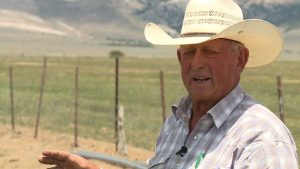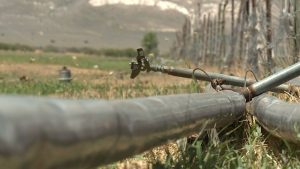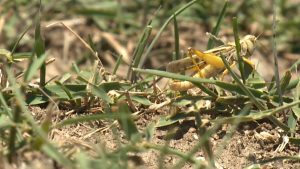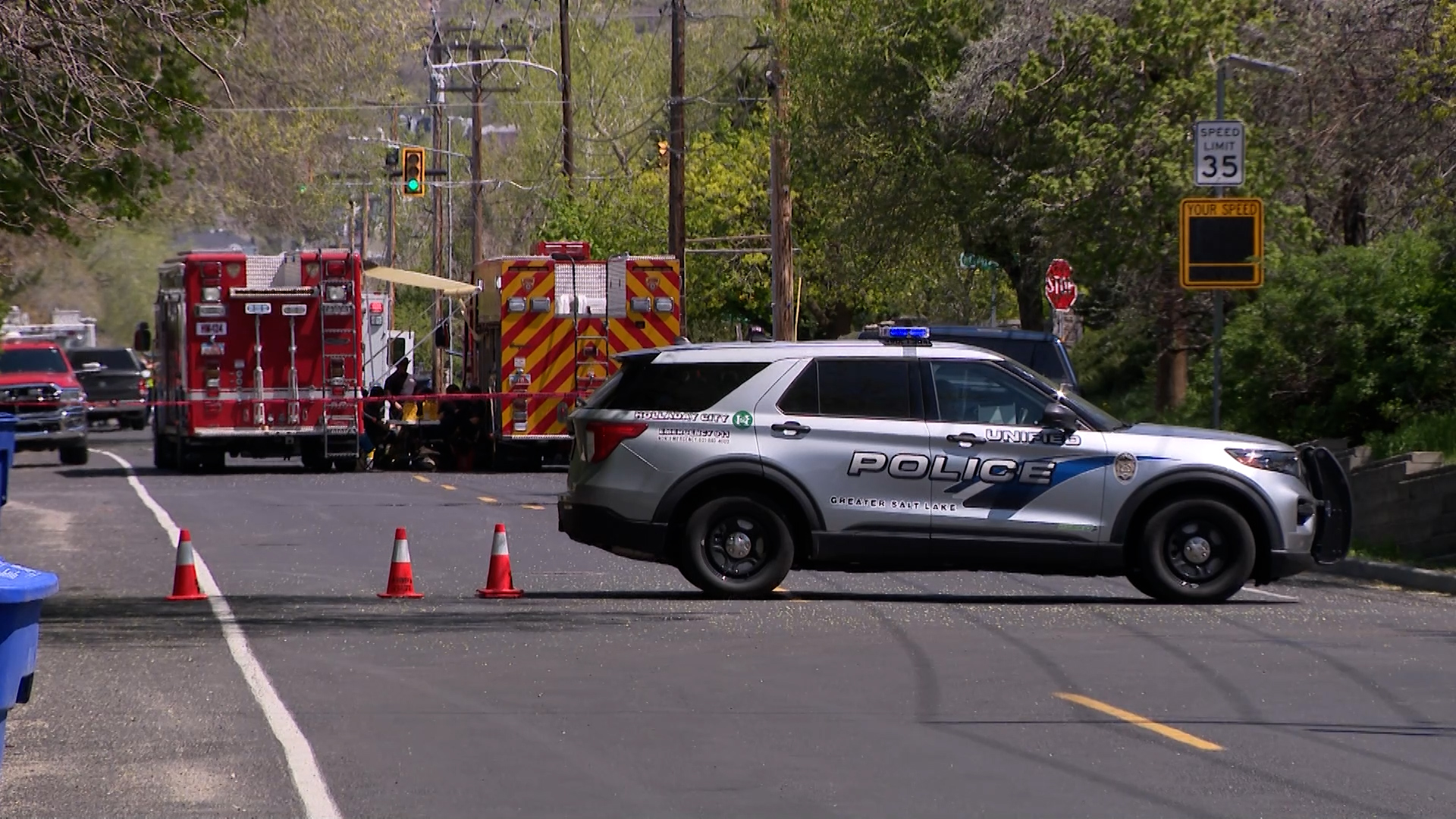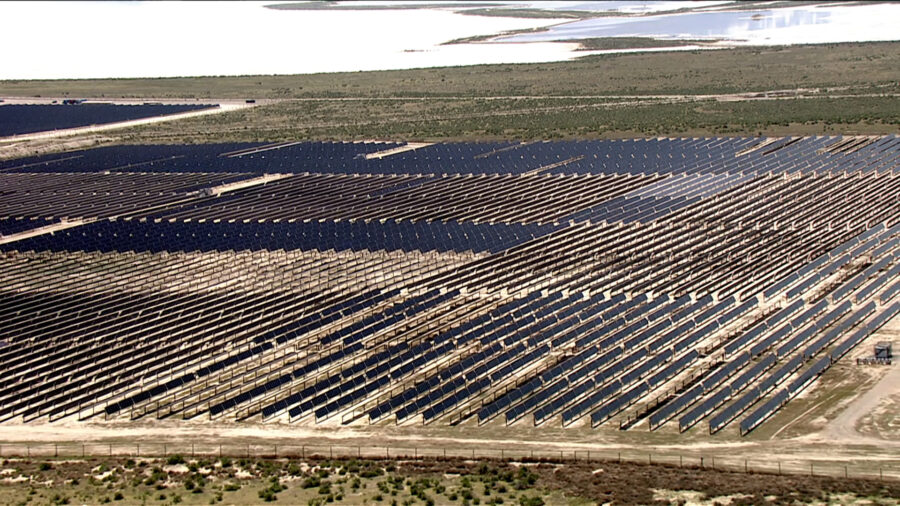Grasshopper Invasion Adding to Plight of Utah Farmers
Jul 7, 2021, 5:43 PM | Updated: Jul 9, 2021, 4:40 pm
BOX ELDER COUNTY, Utah — The invading grasshoppers are already adults, so they’re always on the move, and hard to spray. Farmers say they’ll run out of water anyway.
It’s a bad combination that for many is leading to a bleak harvest.
“We first noticed them like the end of May, you know?” Royce Larsen tells KSL TV. “They were just tiny, started hatching.”
Farmers know there will be good years and bad. There aren’t many years quite like this.
“Between the hoppers and the drought… it’s bad,” Larsen said.
Royce Larsen is among the farmers in Box Elder County who say these pests hatched early and in big numbers making it tough to get on top of the problem.
“We’ve seen kind of a perfect, terrible storm, with the drought that we’re facing right now,” Josh Dallin said.
Dallin is part of the faculty for livestock and range at the Utah State University Extension. He says he’s seen about 35 different ranches across the county all dealing with only a fraction of the hay they’d normally produce.
“We’re just seeing these numbers of grasshoppers just taking out and decimating any of the plant life that is generating on our range land,” Dallin said.
Box Elder is just one of several counties facing this same problem. Grasshoppers come and go in cycles, but they tend to reproduce in larger numbers when it’s especially dry.
“We’re looking at about 7.5 billion grasshoppers,” Dallin tells KSL TV. “So that gives you an idea.”
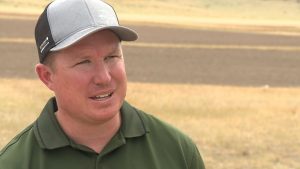
Josh Dallin, part of the faculty for livestock and range at the Utah State University Extension (Mike Anderson, KSL TV)
Larsen expects to have less than 20 percent of the hay they’d normally produce.
“People think farmers are crazy and we all should be gone,” Larsen said. “But somebody has to produce food, whether they like it or not.”
Farmers will have to hold out for better luck next year and hope a cold winter will kill off the eggs these grasshoppers leave behind.
Through the Utah Department of Agriculture, farmers can get pesticide to spray for the grasshoppers, through cost sharing program.
Larsen says the trouble is they still have to pay for the application and, at this point in the season, it’s a gamble as to whether it will help them save any crops.

